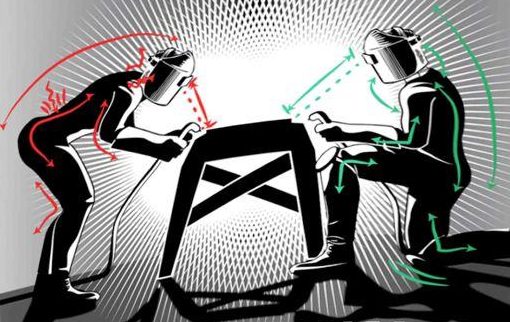Occupational Ergonomics: A Practical Approach
Introduction
Occupational ergonomics is the science of designing workplace environments and job tasks to fit the physical and cognitive abilities of employees. This practical approach aims to optimize productivity, enhance safety, and prevent work-related injuries and illnesses. By understanding and applying ergonomic principles, organizations can create a healthier and more efficient workforce. Ergonomics not only addresses physical discomfort but also improves mental well-being by reducing stress and cognitive overload. This comprehensive article explores the fundamentals of occupational ergonomics, practical applications, and the benefits it brings to employers and employees alike.
The Fundamentals of Occupational Ergonomics
What Is Ergonomics?
Ergonomics is derived from the Greek words “ergon” (work) and “nomos” (laws), meaning the laws of work. It focuses on the interaction between people, their tools, and their environment. The goal is to design tasks, equipment, and processes that align with human capabilities and limitations. This alignment minimizes the risk of musculoskeletal disorders (MSDs), reduces fatigue, and enhances efficiency.
Occupational ergonomics specifically addresses workplace challenges by applying scientific principles to create a safe and supportive work environment. This involves assessing risk factors, redesigning workspaces, and educating employees about proper techniques and postures. Additionally, ergonomics considers both physical and psychological aspects, ensuring a holistic approach to worker well-being.

Key Principles of Ergonomics
- Neutral Posture: Maintaining a natural alignment of the spine and joints to reduce strain. Workers should be trained to recognize and maintain neutral postures during their tasks.
- Task Variation: Alternating tasks to avoid repetitive stress and overuse of specific muscle groups. Scheduling breaks or rotating duties can help mitigate the effects of repetitive actions.
- Force Reduction: Minimizing the physical effort required to perform tasks. Introducing tools like levers or hoists can significantly reduce the strain on workers.
- Optimal Reach Zones: Placing frequently used tools within easy reach to reduce unnecessary movements. Proper workstation layout ensures efficiency and minimizes awkward stretching.
- Clear Visibility: Ensuring adequate lighting and display setups to prevent eye strain and awkward postures. Adjustable monitors and anti-glare screens can contribute to better visibility.
Practical Applications of Occupational Ergonomics
Workstation Design
Workstation design is critical for office-based and industrial jobs. Properly configured workstations improve comfort and efficiency. For example:
- Office Workstations: Adjustable chairs with lumbar support, height-adjustable desks, and correctly positioned monitors reduce the risk of back pain and eye strain. Keyboards and mice should be positioned to keep wrists in a neutral posture. Document holders and footrests can further enhance comfort.
- Industrial Workstations: Adjustable workbenches and tools reduce the need for awkward postures and excessive force. Ergonomic flooring can alleviate fatigue for workers who stand for extended periods. Adding height-adjustable conveyor belts and anti-fatigue mats also improves overall ergonomics.
Manual Handling
Manual handling tasks, such as lifting, carrying, or pushing objects, pose significant ergonomic risks. Adopting proper techniques and providing mechanical aids can prevent injuries. Key strategies include:
- Training employees in safe lifting techniques, such as bending at the knees instead of the waist. Visual demonstrations and regular refresher courses can reinforce these practices.
- Using carts, dollies, or conveyor systems to transport heavy loads. Employers should invest in equipment suited for their specific operational needs.
- Designing tasks to minimize lifting frequency and load weight. Rearranging workspaces to reduce the distance objects need to be moved can also help.
Tools and Equipment
Ergonomically designed tools and equipment enhance worker performance and safety. Examples include:
- Power tools with anti-vibration features to reduce strain on hands and arms. These tools also decrease the likelihood of long-term conditions like hand-arm vibration syndrome.
- Handles with appropriate grip sizes to improve comfort and control. Non-slip materials on tool handles provide better grip, even in demanding conditions.
- Height-adjustable equipment to accommodate workers of varying statures. Customizable equipment ensures inclusivity and optimal performance for all users.
Identifying and Mitigating Ergonomic Risks
Common Ergonomic Hazards
- Repetitive Movements: Performing the same motion repeatedly can lead to conditions like carpal tunnel syndrome. Monitoring and redesigning workflows to include more varied tasks can mitigate these risks.
- Awkward Postures: Prolonged bending, twisting, or reaching can cause musculoskeletal strain. Proper workspace arrangement and training can help workers avoid awkward positions.
- Excessive Force: Tasks requiring high physical effort can lead to overexertion injuries. Introducing assistive devices and distributing workloads evenly are effective countermeasures.
- Static Positions: Holding a position for an extended period, such as sitting or standing, can cause discomfort and fatigue. Encouraging micro-breaks and providing ergonomic chairs or sit-stand desks can alleviate these issues.
Conducting Ergonomic Assessments
An ergonomic assessment identifies workplace hazards and provides recommendations for improvement. Steps include:
- Observation: Monitoring employees to identify risky behaviors and postures. Video recordings can offer detailed insights into movement patterns.
- Data Collection: Gathering information on tasks, tools, and workplace layouts. Surveys and direct feedback from employees provide valuable perspectives.
- Risk Analysis: Evaluating the potential for injury based on identified hazards. Using software tools to simulate ergonomic risks can enhance accuracy.
- Implementation: Applying changes, such as workstation adjustments or introducing new tools. Pilot programs allow employers to test solutions before full-scale adoption.
- Follow-Up: Monitoring the effectiveness of implemented solutions and making necessary adjustments. Regular assessments ensure ongoing compliance and safety.
Benefits of Ergonomics in the Workplace
Enhanced Employee Well-Being
Ergonomics prioritizes the health and comfort of employees, reducing the risk of work-related injuries. By addressing factors such as poor posture and repetitive strain, employers can foster a healthier workforce. This leads to:
- Lower rates of absenteeism due to injury or illness. Healthier employees are also more likely to remain engaged and productive.
- Improved morale and job satisfaction. A comfortable work environment demonstrates that the organization values its workforce.
- Reduced healthcare costs for both employees and employers. Preventive measures lower the need for medical interventions and compensation claims.
Increased Productivity
A well-designed workplace enables employees to perform tasks efficiently and comfortably. Ergonomic interventions reduce fatigue and discomfort, allowing workers to maintain focus and energy levels throughout their shifts. For example, ergonomic tools and workstations streamline processes, eliminating unnecessary movements and delays. Employees who experience less physical strain can dedicate more effort to their tasks, enhancing output quality and speed.
Financial Benefits for Employers
Investing in occupational ergonomics yields significant financial returns by reducing costs associated with workplace injuries, absenteeism, and turnover. Additionally, ergonomic improvements can:
- Enhance product quality by minimizing errors caused by worker fatigue. Consistent quality leads to increased customer satisfaction and loyalty.
- Boost operational efficiency through optimized workflows. Reduced downtime from injuries ensures uninterrupted productivity.
- Strengthen compliance with occupational health and safety regulations, avoiding penalties. A proactive approach to ergonomics demonstrates a commitment to employee welfare and legal compliance.
Case Studies in Ergonomics
Office Ergonomics Success
A technology company implemented ergonomic assessments across its offices, providing employees with adjustable chairs, sit-stand desks, and dual-monitor setups. Within six months, the company observed a 30% reduction in reported discomfort and a 15% increase in productivity. Additionally, employee feedback highlighted improved job satisfaction and a more positive workplace culture.
Industrial Ergonomics Transformation
A manufacturing plant introduced ergonomic tools, such as lightweight power tools and adjustable workstations, to address worker complaints of fatigue and repetitive strain injuries. These changes resulted in a 25% decrease in injury rates and a 20% improvement in production output. The plant also reported lower turnover rates, as employees appreciated the enhanced focus on their well-being.
Overcoming Challenges in Implementing Ergonomics
Resistance to Change
Employees and management may resist ergonomic changes due to perceived costs or disruptions. Overcoming this challenge requires:
- Demonstrating the long-term benefits of ergonomics through data and case studies. Sharing success stories from similar industries can build confidence in the proposed changes.
- Involving employees in the decision-making process to gain their support. Worker input ensures that solutions are practical and well-received.
- Providing training to ensure smooth adoption of new practices. Interactive sessions and hands-on demonstrations can help employees understand the value of ergonomics.
Budget Constraints
While ergonomic improvements require initial investment, they offer substantial long-term savings. Employers can:
- Prioritize cost-effective changes, such as workstation adjustments and training programs. Simple interventions often yield significant results.
- Explore government grants or incentives for workplace safety improvements. These resources can offset costs and encourage broader adoption of ergonomic practices.
- Gradually implement ergonomic solutions to manage costs. Phased rollouts allow organizations to allocate budgets effectively while maintaining operational continuity.
Future Trends in Occupational Ergonomics
Advancements in technology are shaping the future of ergonomics. Emerging trends include:
Wearable Technology: Devices that monitor posture, movement, and fatigue provide real-time feedback to employees and employers. These devices can also track long-term trends to inform ergonomic interventions.
Artificial Intelligence: AI-powered tools analyze ergonomic risks and recommend personalized interventions. Machine learning algorithms can predict potential issues and suggest preventive measures.
Virtual Reality (VR): VR simulations allow workers to practice tasks and identify ergonomic risks in a controlled environment. This technology is particularly useful for training and designing new workflows.
Conclusion and get your Book
Occupational ergonomics is a practical approach to enhancing workplace safety, health, and productivity. By understanding ergonomic principles and applying them effectively, organizations can create environments that support their workforce’s well-being and efficiency. The benefits extend beyond individual workers to encompass financial gains, improved compliance, and a stronger organizational culture. As workplaces evolve, the importance of ergonomics will continue to grow, making it a cornerstone of modern occupational health and safety practices. Organizations that embrace ergonomic advancements will be better positioned to meet the challenges of a dynamic and demanding work environment.
 Boilersinfo Boiler and Mechanical Power Digital Library
Boilersinfo Boiler and Mechanical Power Digital Library





